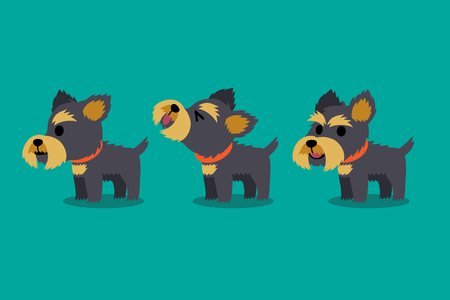Introduction: Embracing the Seasons with Your Dog
As pet parents in the United States, we know that each season brings its own special joys—whether it’s hiking through autumn leaves, playing in the snow, or lounging in the summer sun. However, these seasonal changes also bring unique health challenges and opportunities for our dogs. From fluctuating temperatures to shifts in daylight hours and outdoor activities, every season impacts your dog’s well-being in different ways. Being proactive about understanding how the environment affects your furry friend can help you keep them happy, healthy, and safe year-round. In this article, we’ll explore why it’s so important to stay ahead of seasonal changes and what you can do to support your dog through every transition.
Spring: Allergies and Outdoor Risks
As winter fades, spring brings warmer temperatures and blooming plants—along with a host of new health concerns for your dog. One of the most common issues during this season is the rise in environmental allergies. Just like humans, dogs can develop sensitivities to pollen, grass, and mold spores, leading to symptoms such as itchy skin, watery eyes, sneezing, and frequent licking or scratching. In addition to allergies, increased time outdoors means greater exposure to external parasites like fleas and ticks, which become more active as temperatures climb.
Common Springtime Allergens & Parasites
| Allergen/Parasite | Potential Symptoms | Prevention Tips |
|---|---|---|
| Pollen (trees, grass) | Itchy skin, runny nose, red eyes | Wipe paws after walks; limit outdoor time on high pollen days |
| Mold Spores | Coughing, sneezing, skin irritation | Keep yard clean; avoid damp areas |
| Fleas | Scratching, hair loss, flea dirt | Use vet-approved flea preventives; check coat regularly |
| Ticks | Lumps on skin, lethargy, tick-borne diseases | Perform tick checks after outings; use tick control products |
Tips for Safe Springtime Walks and Play
- Check the daily pollen count in your area and choose times with lower levels for outdoor activities.
- Bathe your dog more frequently to remove allergens from their coat.
- Avoid tall grasses and wooded areas where ticks and fleas thrive.
- Use veterinarian-recommended flea and tick prevention products consistently.
- Inspect your dog’s fur, ears, and paws after each walk for any signs of parasites or irritation.
By staying alert to these seasonal risks and taking proactive measures, you can help your dog safely enjoy all the fun that springtime has to offer while minimizing allergy flare-ups and parasite problems.

3. Summer: Heat Safety and Hydration
As temperatures rise, summer brings unique challenges for your dog’s health. Heatstroke is a serious risk, especially for breeds with thick coats or short snouts, like Bulldogs or Pugs. Signs of heatstroke include excessive panting, drooling, weakness, and even collapse. If you notice these symptoms, move your dog to a cool place and contact your veterinarian immediately.
The Importance of Hydration
During the hot months, dogs need constant access to fresh water. Dehydration can happen quickly and may lead to lethargy, dry gums, and sunken eyes. When heading outdoors, always bring extra water and a portable bowl for your furry friend.
Paw Protection on Hot Pavement
Hot pavement and sand can burn your dog’s sensitive paw pads. A simple way to test is by placing the back of your hand on the ground for seven seconds—if it’s too hot for you, it’s too hot for them. Consider walking your dog early in the morning or later in the evening when surfaces are cooler. Dog booties or paw waxes can also offer protection during summer strolls.
Best Practices for Keeping Dogs Cool
Never leave your dog in a parked car, even for a few minutes, as temperatures can skyrocket dangerously fast. Provide shade if your pet is outdoors and use cooling mats or damp towels to help regulate their body temperature. Limit exercise during peak heat hours and opt for shaded parks or grassy trails. With a few mindful adjustments, you can keep your dog safe, healthy, and happy all summer long.
4. Fall: Adjusting to Cooler Weather
As fall arrives, the weather begins to cool and daylight hours shorten. These changes can significantly impact your dogs health and daily routine. Understanding how to adjust your care during this season will help keep your furry friend happy and healthy.
Decreased Activity Levels
The drop in temperature and fewer daylight hours may lead to reduced outdoor playtime for your dog. Less activity can result in weight gain or boredom-related behaviors like chewing or excessive barking. Try to maintain regular walks and incorporate indoor games to keep your dog active and mentally stimulated.
Joint Health Concerns
Cooler temperatures can be especially tough on older dogs or breeds prone to joint issues, such as arthritis. You might notice your pet becoming stiffer or slower to get up in the morning. Providing a warm, comfortable bed and considering supplements like glucosamine (with your vet’s approval) can help ease discomfort.
Exposure to Seasonal Toxins
Fall brings new hazards for dogs, including certain mushrooms that sprout in damp areas and antifreeze leaks from vehicles. Both are highly toxic if ingested. Always supervise your dog when outdoors and keep an eye out for these dangers.
Common Fall Hazards for Dogs
| Hazard | Where It’s Found | Health Risks | Prevention Tips |
|---|---|---|---|
| Mushrooms | Lawn, parks, woods | Toxicity, vomiting, seizures | Avoid unsupervised outdoor time; remove visible mushrooms from yard |
| Antifreeze (Ethylene Glycol) | Driveways, garages, streets | Kidney failure, death | Clean spills immediately; keep containers sealed and out of reach |
| Rodenticides (Rat Poison) | Sheds, garages, around homes | Bleeding disorders, neurological issues | Use pet-safe products; monitor outdoor spaces closely |
Key Takeaway:
Adapting to fall means being mindful of cooler weathers effects on your dogs body and being vigilant about hidden seasonal risks. With attentive care, you can ensure your dog stays safe and active throughout autumn.
5. Winter: Cold Weather and Indoor Concerns
When winter arrives, the cold, ice, and snow can present several health challenges for your dog. The low temperatures can lead to dry, cracked paws and skin, making your furry friend more susceptible to discomfort or even injury. Snow and ice may become trapped between their paw pads, causing irritation or frostbite if left unchecked.
Protecting Paws and Skin from the Elements
Exposure to ice-melting salts and chemicals can irritate or burn your dogs feet. Its important to wipe your dog’s paws after walks and consider using booties for extra protection. Moisturizing paw balms formulated for pets can help prevent dryness and cracking caused by the harsh winter air.
Maintaining Daily Exercise Indoors
Shorter days and freezing weather often mean less time outside, but regular exercise is still crucial for your dog’s physical and mental health. Try indoor games like fetch in a hallway, hide-and-seek with treats, or interactive toys that encourage movement. These activities help prevent weight gain and keep your dog stimulated when outdoor play isn’t possible.
Common Winter Hazards: Salt, Antifreeze, and More
Be aware of toxic substances such as antifreeze, which has a sweet taste that attracts dogs but is extremely dangerous if ingested. Always clean up spills immediately and store chemicals securely out of reach. Additionally, be mindful of snow buildup on driveways and sidewalks where salt or de-icers have been used—these substances can stick to fur and paws, posing a risk if licked off later.
By taking these precautions during the winter months, you can help ensure your dog stays healthy, comfortable, and safe until spring returns.
6. Seasonal Health Maintenance Tips
Keeping your dog healthy throughout the year means adjusting your care routine as the seasons change. Here are some essential tips to help you maintain your dog’s well-being, no matter the weather:
Schedule Regular Vet Checkups
Annual or bi-annual visits to your veterinarian are crucial for early detection of potential health issues. Your vet can provide recommendations tailored to your dog’s age, breed, and lifestyle, and update any necessary vaccinations based on seasonal risks.
Focus on Parasite Prevention
Parasites like fleas, ticks, and mosquitoes thrive in different conditions year-round. Use veterinarian-recommended preventatives consistently, even during colder months, as some parasites can survive indoors or in milder climates. Be vigilant for signs of infestations and consult your vet if you notice anything unusual.
Seasonal Grooming Adjustments
Your dog’s grooming needs may change with the seasons. In winter, keep fur a bit longer for warmth but ensure it doesn’t mat or collect ice. During warmer months, regular brushing helps remove excess undercoat and reduces shedding. Always check paws for salt or debris after walks in winter and for grass seeds or ticks in summer.
Adapt Exercise Routines
Extreme heat or cold can impact your dog’s ability to exercise safely. On hot days, walk early in the morning or later in the evening and provide plenty of water and shade. In winter, opt for shorter walks and indoor play if temperatures drop too low. Adjust activity intensity according to your dog’s breed, age, and health status.
Year-Round Wellness Habits
Monitor your dog’s weight, appetite, and behavior for any changes that might signal a health issue. Provide a balanced diet appropriate for their activity level and seasonally adjust caloric intake if needed. By staying proactive with these health maintenance strategies, you’ll help your furry friend thrive through every season.
7. Conclusion: Staying Ahead of the Seasons for a Healthy, Happy Dog
As the seasons shift throughout the year, your dog’s health needs can change just as much as the weather outside. Being attentive to these seasonal variations is one of the best ways you can support your furry friend’s overall wellbeing. Whether it’s braving winter’s chill or staying cool during summer heat waves, each season brings unique challenges and opportunities for pet owners. Remember, you don’t have to do this alone—partnering with your veterinarian ensures that your dog receives timely health checkups, preventive care, and guidance tailored to their specific needs all year long. Stay proactive by monitoring environmental changes, adjusting routines as needed, and seeking expert advice when concerns arise. By staying mindful and working closely with your vet, you’ll help keep your dog healthy, comfortable, and happy through every season.

